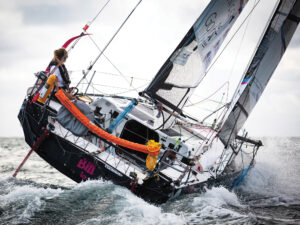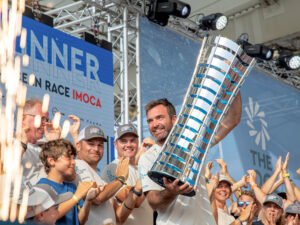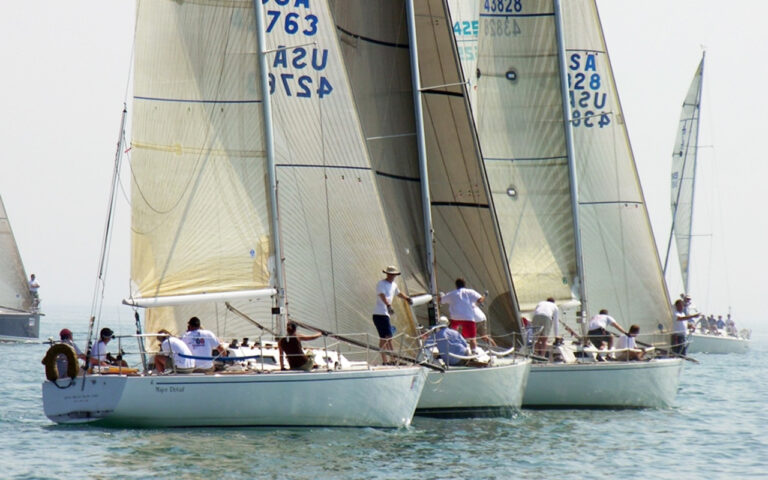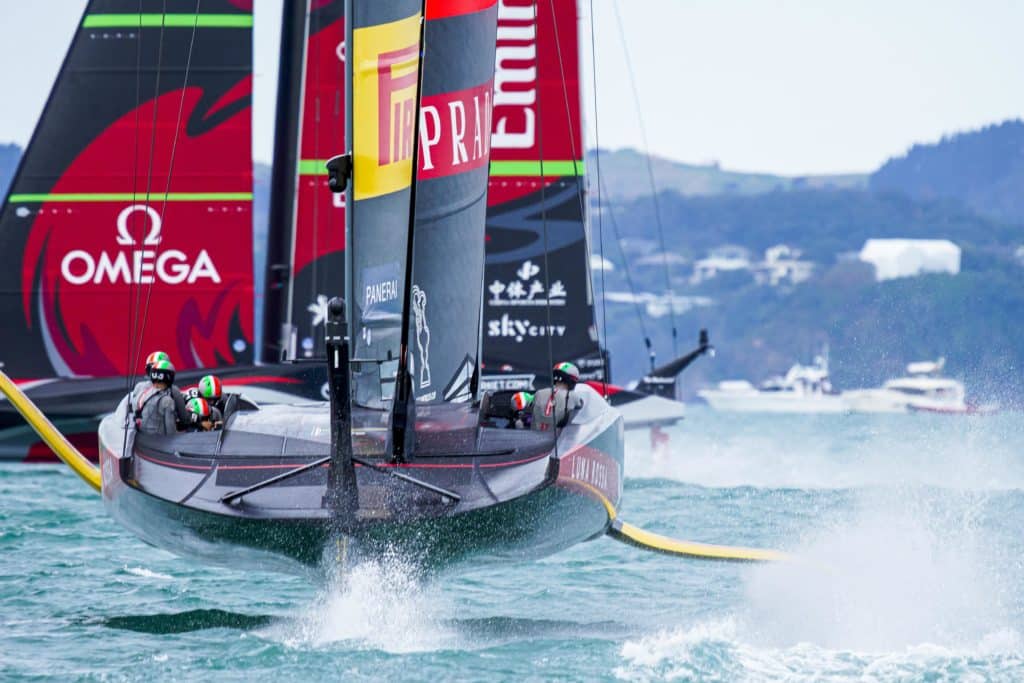
To get a keen understanding of the 36th America’s Cup opening salvos in Auckland, let’s just rewind the replays and turn up the volume. What we hear is the chorus of grinders hammering away at their pedestals and gasping as their respective skippers and sail trimmers whip them especially hard with maneuvers. Yes, they’ve trained for it, but the demand for oil was relentless. Take Race 1, for example: 10 tacks and 6 jibes for the Emirates Team New Zealand; 11 and 8, respectively for Luna Rossa Prada Pirelli. In the next, count a total of 19 tacks and 7 jibes for Luna Rossa; 16 and 9 for Team New Zealand. That’s a high demand for on power packs, on a day where success was less about straight-line speed—both teams were fairly even in this regard—and more about speed through the tacks. And in this one critical measure, even though the score line stands at 1-and-1, the Italians won the day.
See the chart below, from Race 2, as exhibit A.
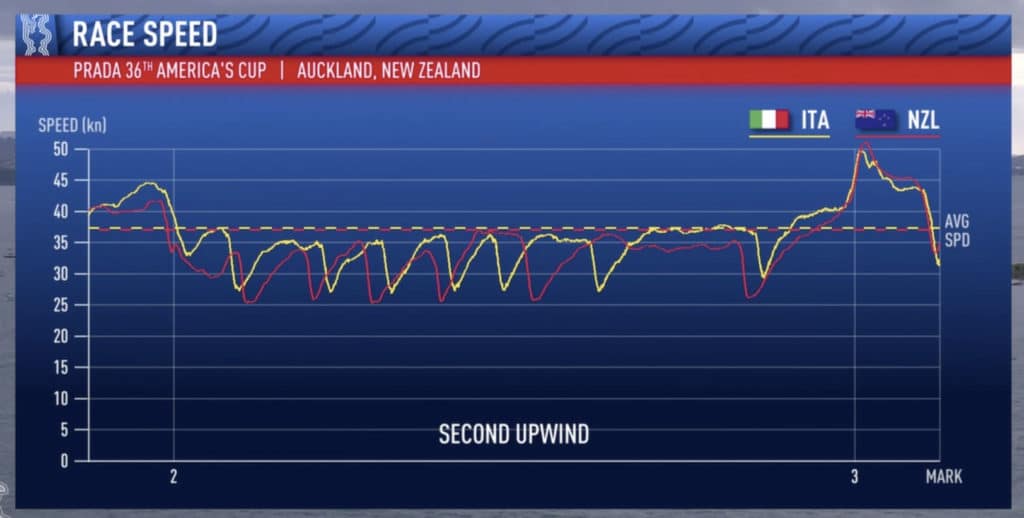
This brings us back to the discussion of Luna Rossa’s manpower configuration. I’d argue it’s better. Team New Zealand having crewmembers running around the boat at critical moments can’t possibly be fast, especially in a race with a lot of tacking. As the chart snapshot shows, the efficiency of the Luna Rossa from tack-to-tack is remarkable. Even if Team New Zealand does have better boatspeed—and that has yet to be proven definitively—Luna Rossa’s tactical weaponry has to be to force the maneuvers and keep the race active.
Reviewing both onboard feeds is revealing. While the choreography of Emirates Team New Zealand crew is slick, practiced and mechanical, there is a lot of movement across the boat and inside those deep cockpits. There were a few slips to deck during transitions (including one for Burling), and on more than one occasion, he, mainsail trimmer Glen Ashby and flight controller Blair Tuke had barely hurdled themselves over their high cockpit walls before having to set up for the next tack. Luna Rossa’s crew meanwhile were settled in their cockpits, instantly focusing on their speed build mode once on the new tack. Smooth, sharp and decisive is how their turns are best described.
In the pre-start especially, there seems to be much more controlled chaos onboard the New Zealand boat. For example, well into the second start, as Team New Zealand was midway-through its high tack and setting up for their final approach, Burling was crossing in front of the mast in the very moment they should have been turning down and accelerating. One of the foils hesitated to move (or was possibly unable to move due to pre-set load parameters) and the cascading effect of being a few seconds late, handed Spithill and Co., the start, even before he Burling skidded into Spithill’s bad air. They pooched the start, that much Burling admitted to. When I asked at the post-race conference last night whether he felt all the movement of his crew could leave them vulnerable in a race with a lot of maneuvers, he simply reminded us that each team has taken a different approach to their setups and he is happy with his. They simply need to refine it, he concluded, and they’ll be fine this weekend.
So yes, there’s a draw on the scoreboard, but the Italians are jubilant with their performance. Their confidence is unwavering, as it should be, because on Day 1, the sailors of Luna Rossa were race sharp. Even though Luna Rossa started behind in the first race as the result of a mistimed approach on Spithill’s part, they kept the racing close and make their gains in the turns. When they were ahead in the second, they decisively executed their coverage and kept in phase with the shifts—even though it did come bit them after exiting the final leeward gate.
They’re confident in their speed and their boathandling, and they’ve given the Defender notice: they’re ready and eager to engage.

